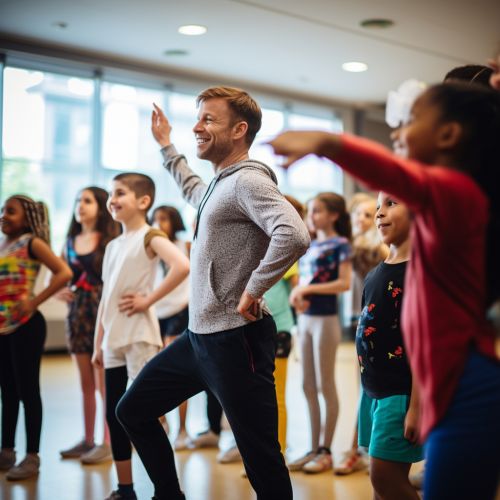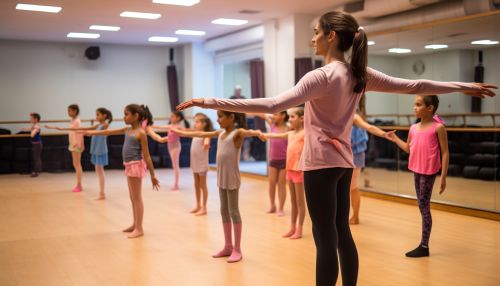Dance Education
Overview
Dance education involves the teaching of the art form of dance. It encompasses a wide range of topics, including the history of dance, the various styles and genres of dance, the techniques and elements of dance, and the benefits of dance education. Dance education can be found in various settings, including schools, dance studios, and community centers. It is a field that combines the creative, physical, and intellectual aspects of dance.


History of Dance Education
Dance education has a long history that dates back to ancient times. In many ancient cultures, dance was an integral part of religious ceremonies, social gatherings, and storytelling. The formal teaching of dance, however, began in the courts of the Italian Renaissance in the 15th century. The first dance manual, "Domenico da Piacenza's De Arte Saltandi et Choreas Ducendi", was published during this period. This marked the beginning of dance education as a structured discipline.
The 19th century saw the establishment of the first professional dance schools, such as the Imperial Ballet School in Russia and the Royal Ballet School in England. These institutions set the standard for classical ballet training and have produced many of the world's leading dancers.
In the 20th century, dance education expanded to include modern and contemporary dance styles. Pioneers like Martha Graham and Alvin Ailey developed new techniques and pedagogies that are still used in dance education today.
Styles and Genres of Dance
Dance education encompasses a wide range of styles and genres. These include:
- Classical Ballet: Originating in the Italian Renaissance courts, classical ballet is characterized by its grace, precision, and formalized steps and gestures. It is often performed to classical music and tells a story through dance.
- Modern Dance: A reaction against the rigid techniques of classical ballet, modern dance emphasizes freedom of movement, improvisation, and expressing inner emotions.
- Jazz Dance: Rooted in African American dance traditions, jazz dance is characterized by its syncopated rhythms, high energy, and a variety of styles including Broadway, contemporary, and lyrical jazz.
- Hip Hop Dance: Originating from street dance in urban communities, hip hop dance includes a range of styles such as breaking, popping, and locking.
- Contemporary Dance: A genre that combines elements of several dance styles including modern, jazz, and ballet. It emphasizes versatility and improvisation.
- Folk Dance: Traditional dances that reflect the life and customs of a certain country or region.
Dance Techniques and Elements
Dance education involves teaching students the techniques and elements of dance. These include:
- Body: The use of the body in dance, including body parts, body shapes, body base, body zones, and body systems.
- Space: The use of space in dance, including direction, level, size, focus, pathway, and place.
- Time: The use of time in dance, including rhythm, speed, and duration.
- Energy: The use of energy in dance, including weight, flow, and force.
- Relationship: The relationships in dance, including those between body parts, between dancers, between dancer and group, and between dancer and objects.
Benefits of Dance Education
Dance education offers numerous benefits. These include:
- Physical Benefits: Dance is a physical activity that improves strength, flexibility, coordination, and endurance. It also promotes good posture and body awareness.
- Cognitive Benefits: Dance education enhances cognitive skills such as memory, attention, and problem-solving. It also fosters creativity and imagination.
- Emotional Benefits: Dance allows students to express their emotions and can boost self-esteem and confidence. It can also reduce stress and improve mood.
- Social Benefits: Dance education promotes social interaction and cooperation. It can also foster cultural understanding and appreciation through the study of different dance styles and traditions.
Dance Education Settings
Dance education can take place in a variety of settings, including:
- Schools: Many schools offer dance as part of their physical education or arts curriculum. Some schools also have extracurricular dance clubs or teams.
- Dance Studios: Dance studios offer classes in various dance styles for all ages and skill levels. They often provide opportunities for students to participate in dance competitions and performances.
- Community Centers: Community centers often offer dance classes as part of their recreational programming. These classes are typically open to community members of all ages.
- Higher Education: Many colleges and universities offer dance programs where students can earn a Bachelor's or Master's degree in dance. These programs typically include both practical dance training and academic study of dance theory and history.
